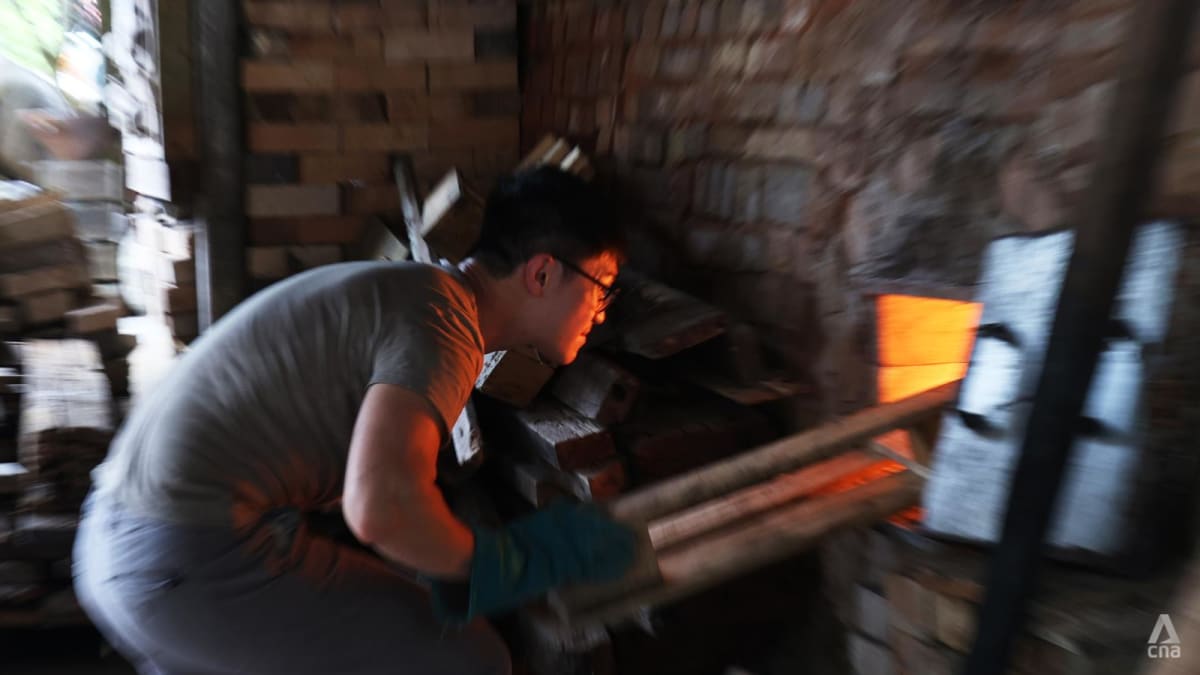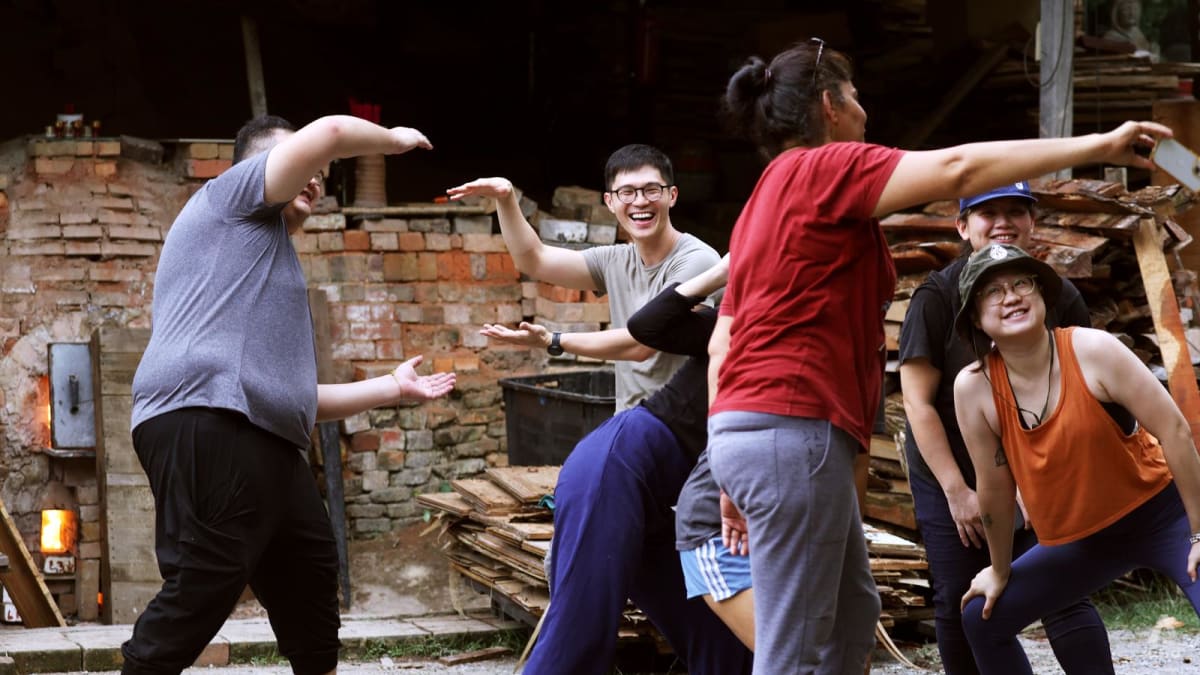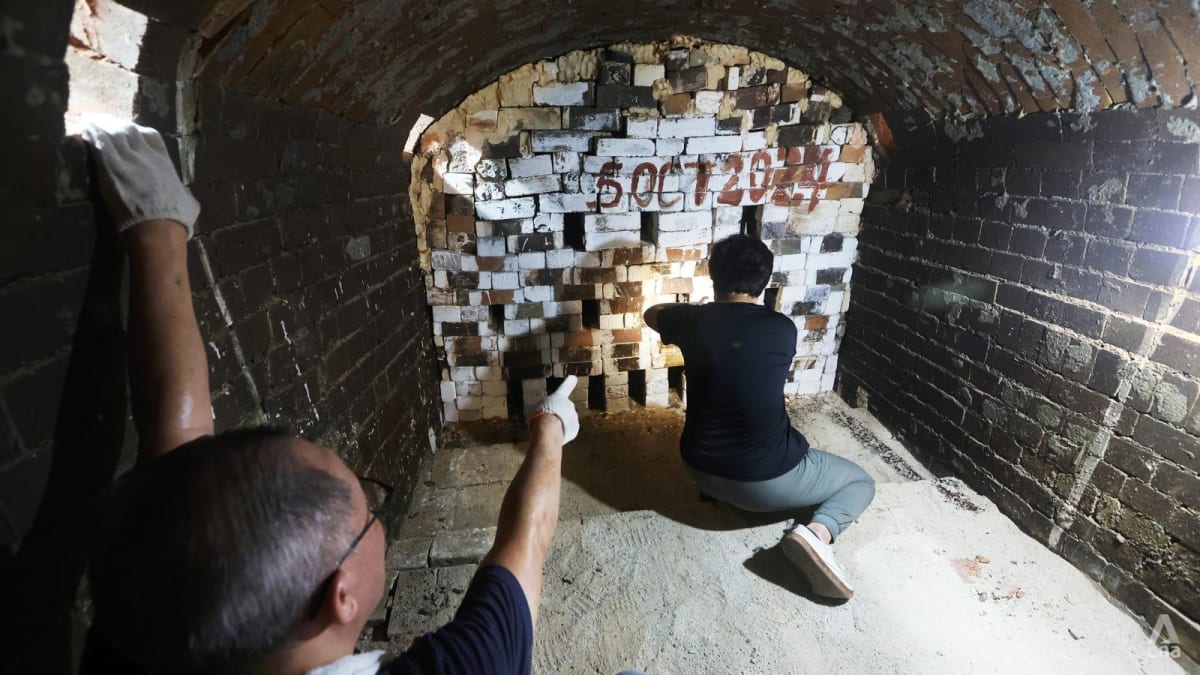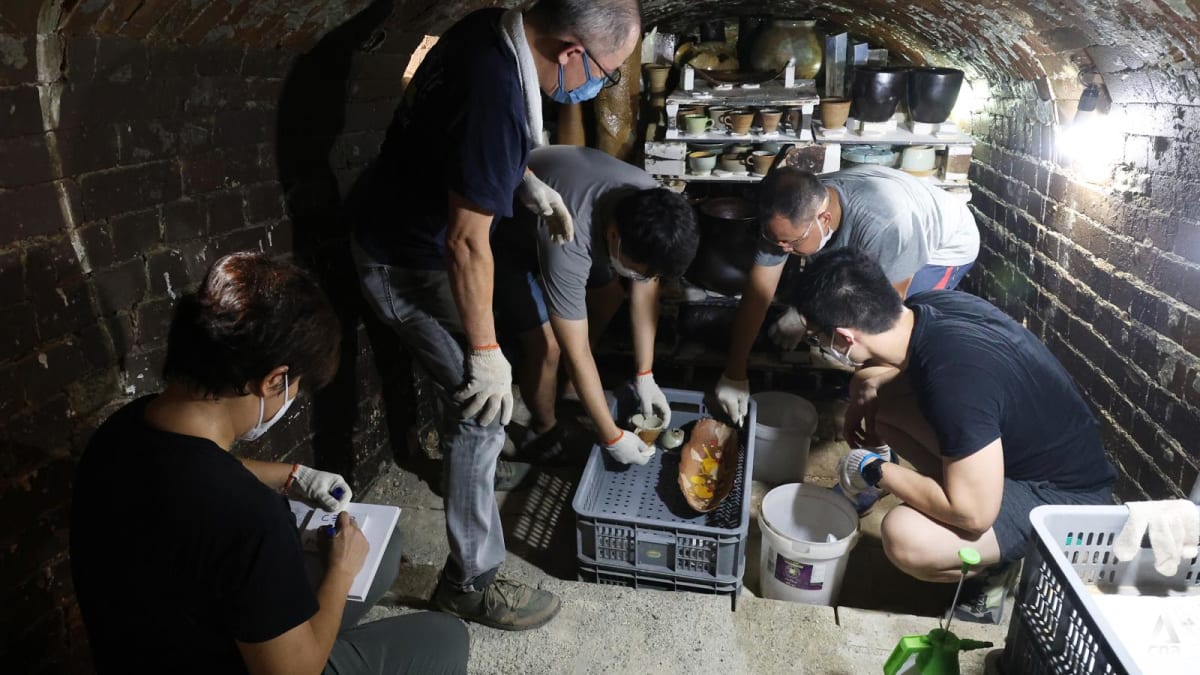Inside a dragon kiln where temperatures go up to 1,300°C

Wood-firing at a dragon kiln is a community effort that requires round-the-clock monitoring. (Photo: CNA/Ooi Boon Keong)
Nestled in an industrial estate in the western part of Singapore is an 84-year-old dragon kiln, the oldest and the only operational dragon kiln in the country.
Built in 1940, the kiln at Thow Kwang Pottery Jungle was originally used for the mass production of household and industrial items such as cups and flower pots.
Over the decades, the place has evolved into a community space, now offering classes and events for potters to hone their craft.
CNA TODAY joined the potter community for a wood-firing session that happens only two or three times a year.
In Pixels takes you through the experience, as new and seasoned potters bond over fire and perspiration, creating unique works of art.
PRAYERS TO THE "KILN GOD"
At Thow Kwang Pottery Jungle, which is located a short distance from Nanyang Technological University, a group of around 30 people gathered on a Friday last month in front of the kiln.
This was at the request of the owners, Mr Tan Teck Yoke, 68, and his wife Yulianti Tan, 66.
A prayer ceremony to the "kiln god" was about to begin.
“We are praying to the ‘kiln god’ for a successful firing, for the pieces to achieve the desired effects,” Mr Tan explained to the enthusiastic participants.
To this, the crowd responded by shouting, “Heng, ong, huat, ah,” a phrase in the Chinese dialect of Hokkien that collectively means wishing for good fortune.

After the prayers were done, the fire box, which is a small opening at the front of the kiln, was lit.
The participants each picked up a piece of wood to throw into the fire, hoping to add more "luck" to the process.

The dragon kiln was bought by Mr Tan’s father in 1965 and has been owned by the family since then.
It sits on a slope, is 27-metres long, 2-metres wide and curves around the side, resembling the body of a dragon in Chinese mythology.
Its lengthy chambers are made out of bricks and there is a chimney at the end, located at the top of the slope.
The kiln can fit thousands of pieces of ceramic items, depending on the size of the pots.
For this firing session, around 400 to 500 pieces were loaded in the kiln.
NEW WAYS TO IMPROVE PROCESS
Temperatures in the dragon kiln can reach up to 1,300°C.
They can fluctuate significantly due to the shape of the furnace and the use of wood as a fuel.
That is why one of the most crucial parts of the process is to monitor the temperature for all three days of the firing session.
Mr Chua Hee Lai, who is in his 50s and a hobbyist-turned-kiln master, helped to plan and lead each firing session.

In 2019, Mr Chua, with the help of another potter, introduced a digital monitoring system that allowed them to track the temperatures remotely and give instructions to the potters doing shift work on site.
Previously, they had to monitor the temperature by looking at the colour of the flame or record temperatures manually and then draw up prediction charts – a process that requires them to be on site for longer periods of time.




THE "KAMPUNG SPIRIT"
Advertising executive Vanessa Low and product manager Goh Wei Ting, both 31, have been practising pottery at another pottery studio for around five years and this was their first time taking part in the wood-firing process.
Compared to a regular firing in an electric or gas kiln, wood-firing is "tiring and physically demanding", Mr Goh said.
However, they were buoyed by the “kampung spirit” or the sense of camaraderie that came about as participants laboured together.
“You just don’t feel tired, you just do (the work),” Mr Goh added.




OPENING OF THE KILN
Six days after the firing at the dragon kiln, the participants returned to open the kiln and check on their art pieces.
“Shall we form a chain?” someone suggested to facilitate the removal of the brick walls.
Without hesitation, a human chain quickly formed as the potters unsealed the kiln, one brick at a time.





A collective “wow” sounded as the final bricks were removed, revealing the final outcome of the nine-day process that comprised three days of firing and six days of cooling.
The potters carefully removed the art pieces from the shelves, while admiring the effects that the fire had on their work.
Ms Tia Boon Sim, 69, one of the founders of Thow Kwang Clay Artists, a community group, said: “In wood-firing, the ashes from the fire would fly around and drop on the pieces and these are the effects potters love.”
When asked if she would do this again, Ms Low said: “I would want to come back with my friends for this, have fun and learn new things together.”









